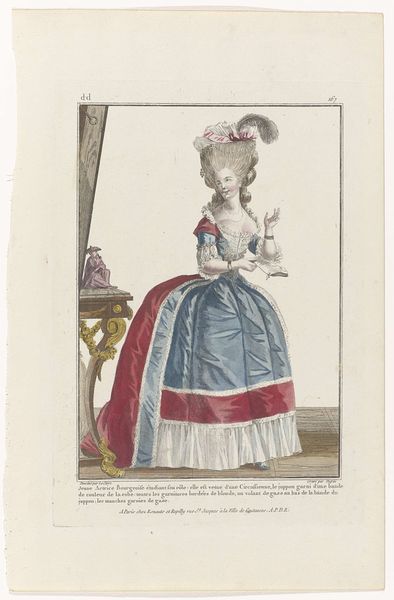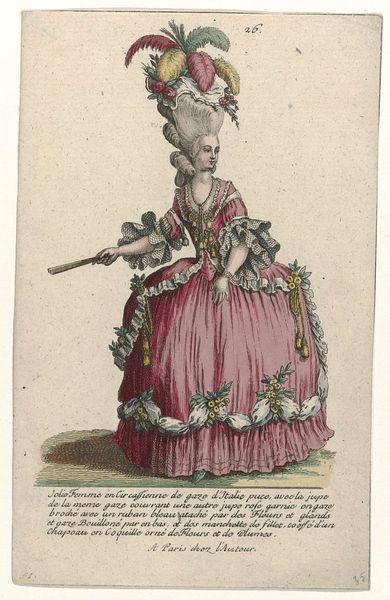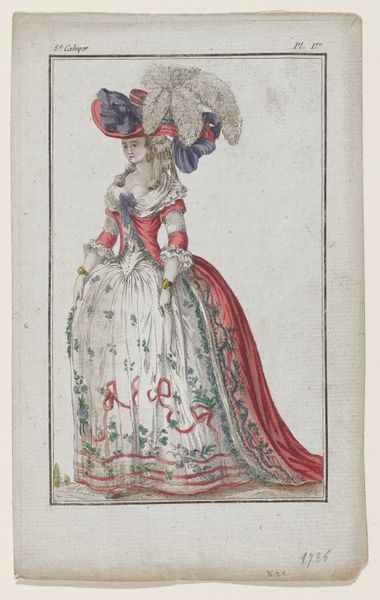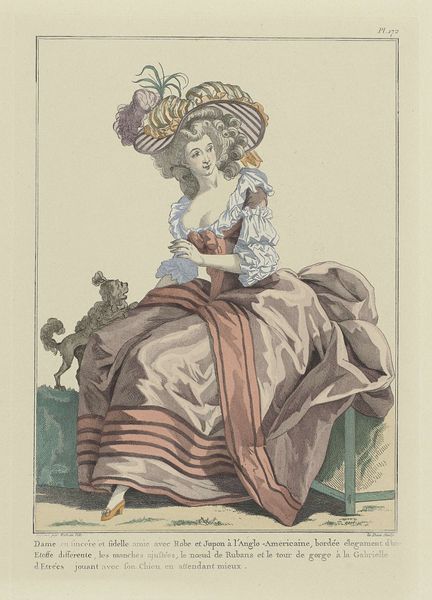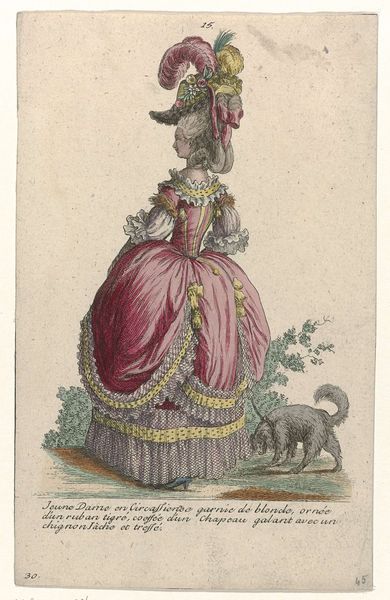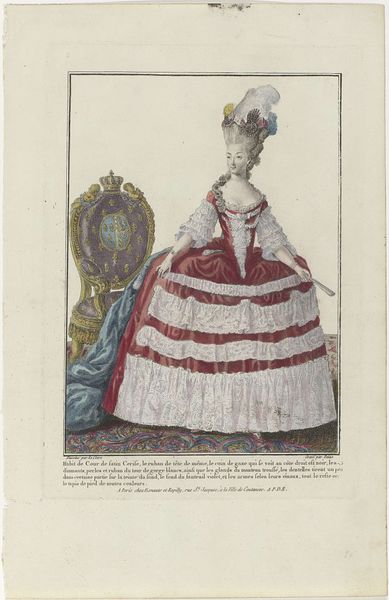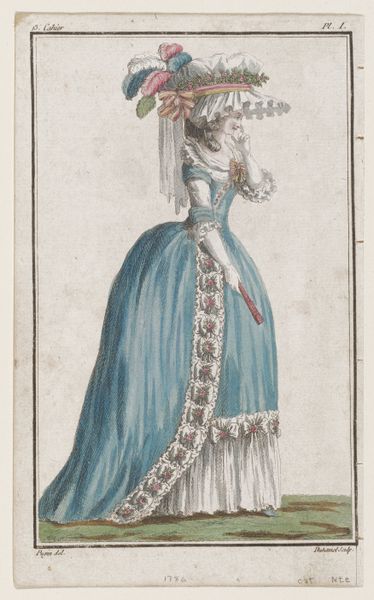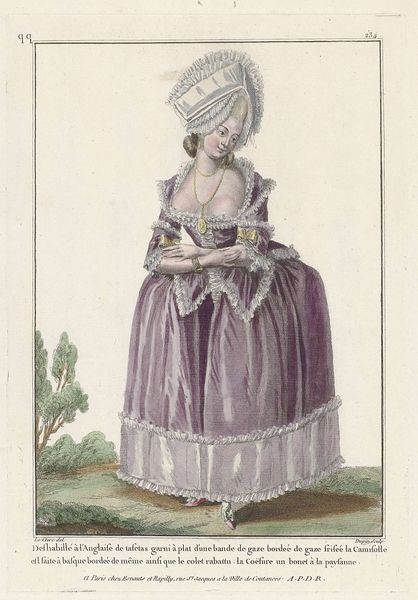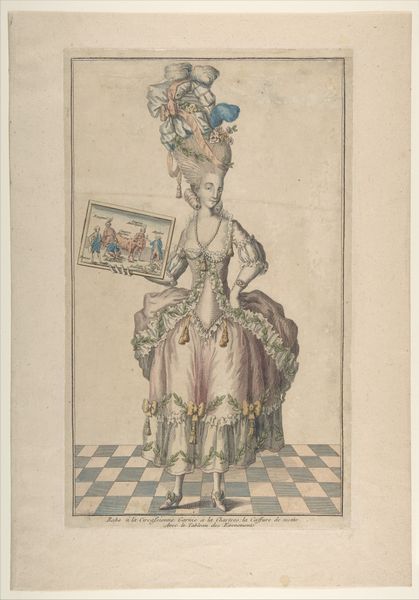
Marie Antoinette: The Queen of Fashion: Gallerie des Modes et Costumes Français 1787
0:00
0:00
nicolasdupin
Rijksmuseum
drawing, coloured-pencil
#
portrait
#
drawing
#
coloured-pencil
#
neoclassicism
#
coloured pencil
#
watercolour illustration
Dimensions: height 296 mm, width 230 mm
Copyright: Rijks Museum: Open Domain
This print of Marie Antoinette was made by Nicolas Dupin, part of a series illustrating French fashion. Look closely at the details rendered by the printmaking process. This wasn't just about capturing an image; it was about dissecting the anatomy of elite style. Consider the fabrics depicted: silks, furs, and lace. These materials speak volumes about labor and class. The silk, likely from China, signals global trade networks built on colonial exploitation. The lace involved countless hours of skilled handwork, often by women in precarious economic situations. And the fur? A blatant display of luxury, obtained at the expense of animal life. Dupin's print isn't just a pretty picture. It's a document of power, privilege, and the complex web of making that sustained it. It reminds us that even fashion has a material history rooted in social realities.
Comments
rijksmuseum about 2 years ago
⋮
French queens were expected to set an example in the realm of fashion. As the wife of Louis XVI, Marie Antoinette threw herself into this task with enthusiasm. Together with her marchande de modes Rose Bertin and her hairdresser Léonard, she launched many a new fashion. Court etiquette dictated robes de cour – lavishly embellished gowns with wide skirts. When receiving visitors, Marie Antoinette wore a robe à la polonaise 1 2, but preferred an informal, loose-fitting gown when at her own pavilion in Versailles. This chemise de la reine 3 was quickly adopted by other women of the elite.
Join the conversation
Join millions of artists and users on Artera today and experience the ultimate creative platform.
